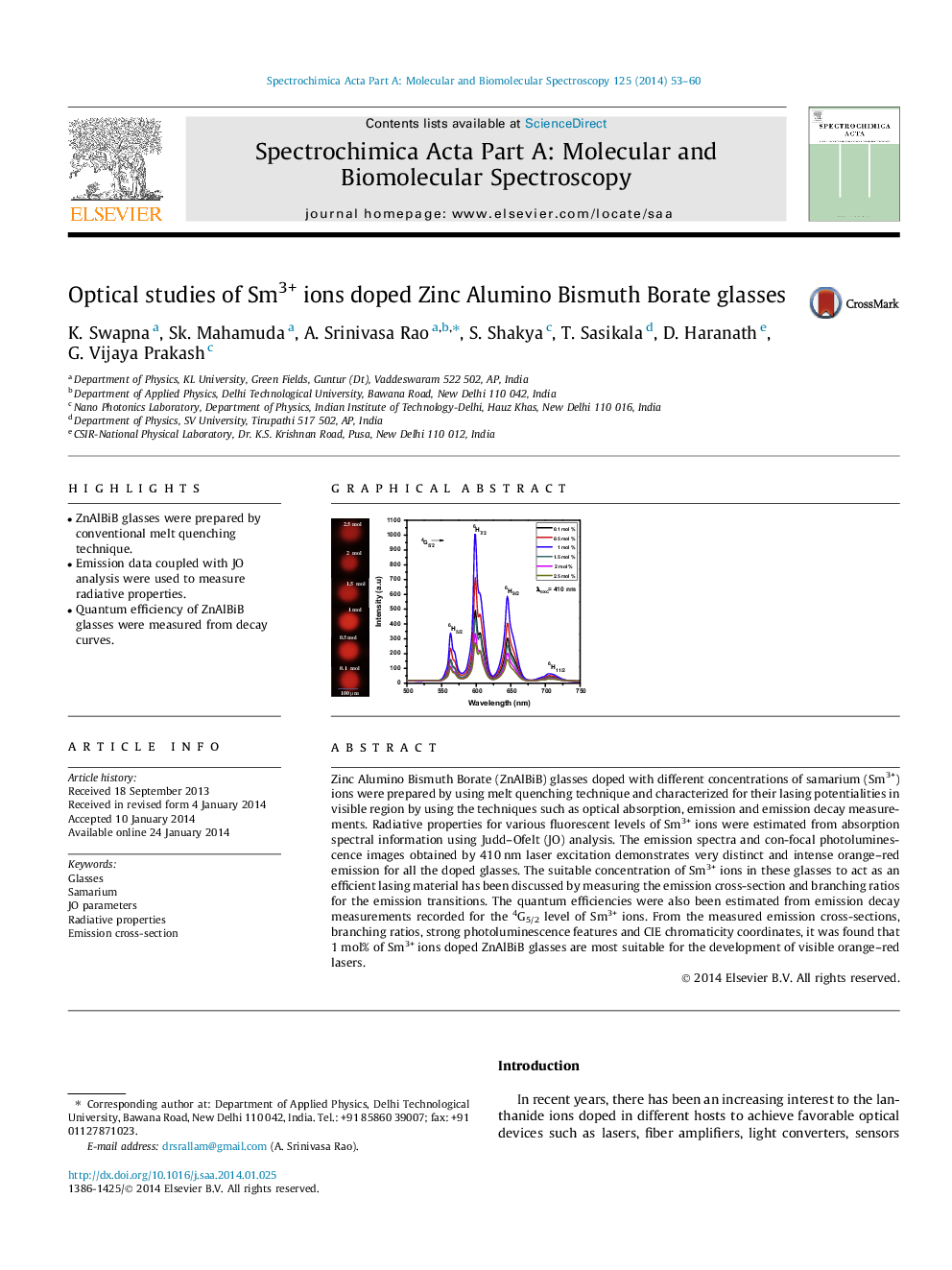| Article ID | Journal | Published Year | Pages | File Type |
|---|---|---|---|---|
| 1230152 | Spectrochimica Acta Part A: Molecular and Biomolecular Spectroscopy | 2014 | 8 Pages |
•ZnAlBiB glasses were prepared by conventional melt quenching technique.•Emission data coupled with JO analysis were used to measure radiative properties.•Quantum efficiency of ZnAlBiB glasses were measured from decay curves.
Zinc Alumino Bismuth Borate (ZnAlBiB) glasses doped with different concentrations of samarium (Sm3+) ions were prepared by using melt quenching technique and characterized for their lasing potentialities in visible region by using the techniques such as optical absorption, emission and emission decay measurements. Radiative properties for various fluorescent levels of Sm3+ ions were estimated from absorption spectral information using Judd–Ofelt (JO) analysis. The emission spectra and con-focal photoluminescence images obtained by 410 nm laser excitation demonstrates very distinct and intense orange–red emission for all the doped glasses. The suitable concentration of Sm3+ ions in these glasses to act as an efficient lasing material has been discussed by measuring the emission cross-section and branching ratios for the emission transitions. The quantum efficiencies were also been estimated from emission decay measurements recorded for the 4G5/2 level of Sm3+ ions. From the measured emission cross-sections, branching ratios, strong photoluminescence features and CIE chromaticity coordinates, it was found that 1 mol% of Sm3+ ions doped ZnAlBiB glasses are most suitable for the development of visible orange–red lasers.
Graphical abstractFigure optionsDownload full-size imageDownload as PowerPoint slide
